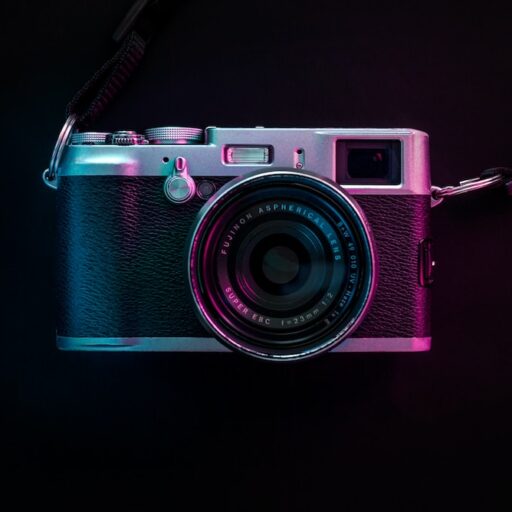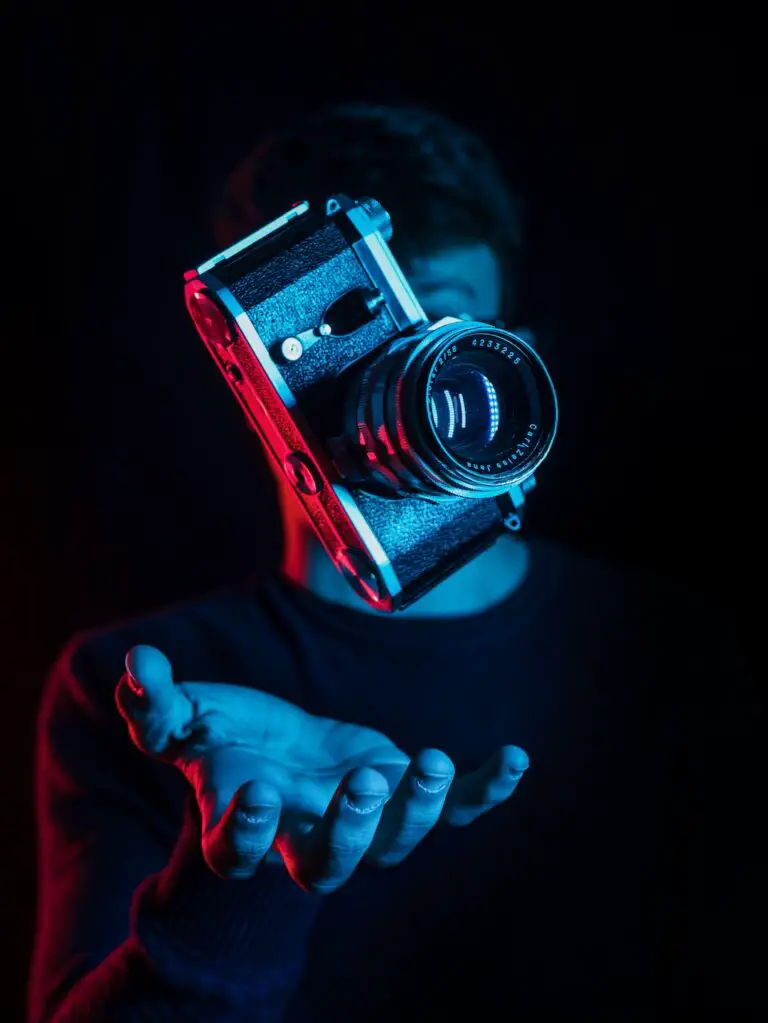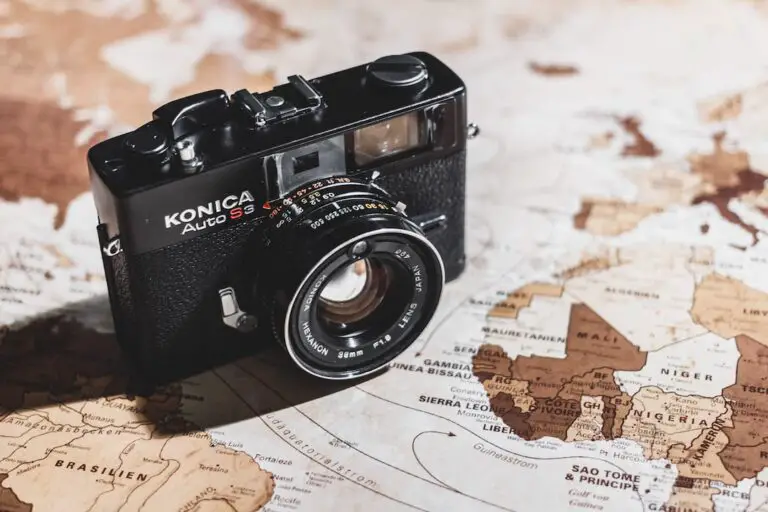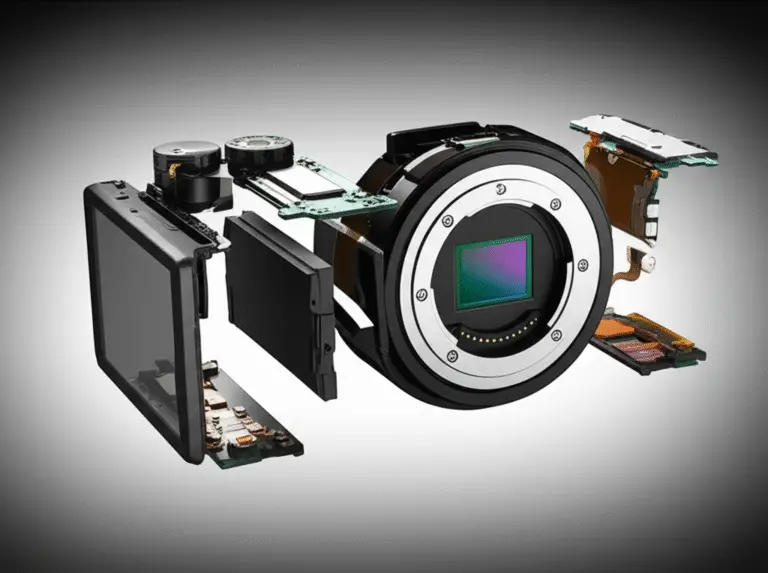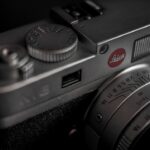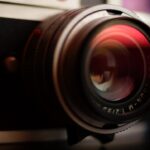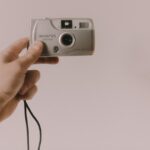Support our educational content for free when you purchase through links on our site. Learn more
7 Best Full-Frame Cameras for Low Light Photography in 2025 🌙
When the lights go down and the world slips into shadows, your camera’s true prowess is put to the test. Whether you’re chasing starry skies, capturing moody portraits by candlelight, or shooting fast-paced concerts in dim venues, having the right full-frame camera can make all the difference between a noisy, blurry mess and a stunning, crisp masterpiece.
At Camera Brands™, we’ve spent countless nights in the field, testing and comparing the latest full-frame cameras to find those that truly excel in low light. Spoiler alert: it’s not always the highest megapixel count that wins. Sometimes, it’s about pixel size, sensor design, and clever tech like Dual Native ISO and in-body stabilization. Later, we’ll reveal our top 7 picks—including the legendary Sony Alpha a7S III and the versatile Canon EOS R6 Mark II—that will help you conquer darkness like a pro.
Curious which camera balances resolution, autofocus, and noise control best? Or which one offers video features that shine when the sun sets? Keep reading to find your perfect low-light companion.
Key Takeaways
- Full-frame sensors provide a natural advantage in low light due to larger pixels capturing more light.
- Sony Alpha a7S III leads in ultra-high ISO performance and video, perfect for specialized low-light work.
- Canon EOS R6 Mark II offers a superb balance of autofocus, image quality, and stabilization for versatile shooting.
- Nikon Z 6 II delivers excellent value with strong low-light capabilities and a robust lens ecosystem.
- Fast lenses (f/1.4 or wider) and in-body image stabilization (IBIS) are essential accessories to maximize low-light results.
- Mirrorless cameras generally outperform DSLRs in low light thanks to advanced autofocus and EVFs.
- Mastering settings like shooting RAW, exposing to the right, and noise reduction techniques is key to clean night shots.
👉 Shop our top full-frame low-light cameras:
- Sony Alpha a7S III: Amazon | Walmart | Sony Official Website
- Canon EOS R6 Mark II: Amazon | Walmart | Canon Official Website
- Nikon Z 6 II: Amazon | Walmart | Nikon Official Website
Table of Contents
- ⚡️ Quick Tips and Facts for Low Light Photography
- 🌌 The Evolution of Low Light: How Cameras Conquered the Dark
- 🔍 Decoding Low Light Performance: What Makes a Camera Shine in the Dark?
- 🌟 Our Top Picks: The Best Full-Frame Cameras for Conquering Darkness
- Sony Alpha a7S III: The Undisputed Low-Light Legend 🌌
- Canon EOS R6 Mark II: The Versatile Performer in the Shadows 🚀
- Nikon Z 6 II: The ISO Whisperer for Night Owls 🤫
- Panasonic Lumix S5 IIX: The Hybrid Powerhouse for Dim Scenes 💡
- Sony Alpha a7 IV: The All-Rounder’s Edge in Low Light ✨
- Canon EOS R3: The Speed Demon in the Dark ⚡
- Nikon Z 8: The Resolution & Low-Light Masterpiece 🌟
- 📸 Beyond the Body: Lenses and Accessories for Ultimate Low Light Performance
- Mirrorless vs. DSLR: Who Wins the Low Light Battle?
- Common Low Light Photography Challenges & Our Expert Solutions
- Our Verdict: Confident Recommendations from the Camera Brands™ Team
- Stay Illuminated: Get More Tips and Insights!
- Conclusion
- Recommended Links
- FAQ
- Reference Links
Here is the main body of the article, crafted by the expert photographers at Camera Brands™.
⚡️ Quick Tips and Facts for Low Light Photography
Diving into the dark? We get it, the magic often happens when the sun goes down. Before we unpack the gear, here are some rapid-fire tips and truths from our team’s countless nights in the field. Keep these in your back pocket!
- Aperture is King 👑: A “fast” lens (one with a wide aperture like f/1.8 or f/1.4) is your number one ally. It lets in more light, allowing for lower ISOs and faster shutter speeds.
- Full-Frame for the Win: Generally, larger sensors, like those in full-frame cameras, have bigger pixels. Bigger pixels capture more light, which translates to cleaner images with less noise at high ISO settings. Digital Camera World notes that while a full-frame sensor is an asset, it’s not an absolute requirement, as technology in smaller sensors has improved dramatically.
- Don’t Fear High ISO: Modern cameras are incredible. As one review puts it, “What was once challenging has become easier than ever,” with cameras easily handling ISO 6400 and beyond. Don’t be afraid to push that ISO dial!
- IBIS is Your Best Friend: In-Body Image Stabilization (IBIS) helps you get sharp handheld shots at surprisingly slow shutter speeds. It’s like having a mini-tripod built right into your camera.
- Shoot in RAW: Always. RAW files capture way more data than JPEGs, giving you much more flexibility to recover shadow details and manage noise in post-processing.
- Autofocus Sensitivity (EV): Look for a camera with a low EV (Exposure Value) for autofocus. A rating of -6EV, for example, means the camera can focus in conditions darker than a moonlit night.
- Manual Focus is Still Relevant: Sometimes, in near-total darkness, even the best autofocus systems hunt. Learning to use manual focus with focus peaking is a game-changing skill.
🌌 The Evolution of Low Light: How Cameras Conquered the Dark
Remember the days of grainy, unusable photos once the sun dipped below the horizon? We do! For years, photographers were tethered to tripods and flashes, and pushing film ISO was a recipe for a speckled mess. The digital revolution changed everything.
Early digital sensors were… let’s just say, not great in the dark. But with the advent of back-illuminated sensors (BSI), improved image processors, and sophisticated noise reduction algorithms, the game completely changed. We’ve moved from struggling at ISO 1600 to confidently shooting at ISO 12,800 and beyond. As Photofocus aptly states, modern cameras make it so “you can shoot up to and beyond ISO 12800 without worrying about your images.” This journey from digital darkness to low-light dominance is why we can now capture everything from candlelit portraits to the Milky Way with stunning clarity. It’s a fantastic time to be a photographer!
🔍 Decoding Low Light Performance: What Makes a Camera Shine in the Dark?
Ever wonder what the secret sauce is for incredible low-light shots? It’s not just one thing, but a cocktail of technology and design. Let’s break down the key ingredients that separate the nocturnal predators from the daytime-only shooters in our Camera Buying Guide.
Sensor Size Matters: The Full-Frame Advantage Explained
Think of a camera sensor as a bucket in the rain. A bigger bucket (a full-frame sensor) will collect more raindrops (light) in the same amount of time than a smaller bucket (an APS-C or Micro Four Thirds sensor). This fundamental principle is why full-frame cameras generally have a natural advantage in low light. More light means a stronger signal, which leads to less digital “noise” or grain, especially when you have to increase the camera’s sensitivity (ISO).
ISO Sensitivity and Noise Management: The Digital Dark Arts
ISO is the digital equivalent of film speed. Cranking it up makes your sensor more sensitive to light, but there’s a trade-off: higher ISOs introduce digital noise. The best low-light cameras use a combination of advanced sensor technology (like BSI sensors) and powerful processors to produce clean, usable images even at ridiculously high ISOs. Some cameras even feature Dual Native ISO, a technology that gives the camera two optimal sensitivity levels, resulting in significantly cleaner images at higher ISO settings.
Autofocus in the Abyss: Locking On When Light is Low
What good is a clean image if it’s blurry? A camera’s ability to autofocus in low light is critical. This is measured in EV (Exposure Value). A camera with an AF sensitivity of -6EV can focus in much darker conditions than one rated at -3EV. Modern mirrorless cameras, with their on-sensor phase-detection pixels, often have a huge advantage here, locking on with confidence when older DSLRs would just hunt back and forth.
In-Body Image Stabilization (IBIS): Steady Shots in Shaky Situations
This is one of our favorite Camera Features! IBIS physically moves the camera’s sensor to counteract your hand movements. This allows you to use much slower shutter speeds without introducing motion blur. Instead of needing a 1/60s shutter speed, you might get a sharp shot at 1/15s or even slower. This lets you keep your ISO lower, resulting in a cleaner final image. It’s a total game-changer for handheld low-light work.
Dynamic Range: Capturing Details from Shadows to Highlights
Dynamic range refers to the camera’s ability to capture detail in both the brightest highlights and the darkest shadows of a scene. In low light, this is crucial. A camera with excellent dynamic range will allow you to “lift” the shadows in post-processing to reveal hidden details without them turning into a muddy, noisy mess.
🌟 Our Top Picks: The Best Full-Frame Cameras for Conquering Darkness
Alright, let’s get to the good stuff! After countless hours shooting in dimly lit venues, under starry skies, and in moody cityscapes, we’ve put together our definitive list. We’ve compared notes, argued over specs, and the results are in. Here are the full-frame beasts that laugh in the face of darkness.
1. Sony Alpha a7S III: The Undisputed Low-Light Legend 🌌
| Feature | Rating (1-10) |
|---|---|
| Low Light Performance | 10 |
| Autofocus | 9.5 |
| Video Capabilities | 10 |
| Resolution (Stills) | 7 |
| Ergonomics & Handling | 8.5 |
If there’s one camera that has become synonymous with low-light performance, it’s the A7S III. It’s less of a camera and more of a nocturnal creature that sees in the dark. Why? It’s all about that sensor.
The 12MP Secret Weapon
While other Camera Brands are in a megapixel race, Sony took a different path. The A7S III has a 12.1-megapixel sensor. This might sound low, but it means each individual pixel is HUGE. These massive pixels drink in light, giving the A7S III an almost supernatural ability to produce clean, vibrant images at ISOs that would make other cameras weep. As Digital Camera World points out, this low pixel count makes it less of an all-rounder, but for low light, it’s “superb.” The featured video review calls it an “absolute monster” in low light, and we wholeheartedly agree. See the review at #featured-video.
Video Prowess and Freakishly Good AF
This camera is a filmmaker’s dream. It offers uncropped 4K video and incredible dynamic range. Its autofocus is, as the video review puts it, “freakishly good,” locking on and staying locked on even in challenging light.
✅ Pros:
- Class-leading high ISO performance.
- Exceptional 4K video features.
- Blazing-fast and reliable autofocus.
- Excellent electronic viewfinder and fully articulating screen.
❌ Cons:
- Lower resolution isn’t ideal for large prints.
- It carries a premium price tag.
👉 Shop Sony Alpha a7S III on:
2. Canon EOS R6 Mark II: The Versatile Performer in the Shadows 🚀
| Feature | Rating (1-10) |
|---|---|
| Low Light Performance | 9 |
| Autofocus | 10 |
| Speed & Performance | 9.5 |
| Resolution (Stills) | 8.5 |
| Overall Value | 9 |
The original Canon EOS R6 made our jaws hit the floor with its low-light skills, and the Mark II takes it a step further. It’s the perfect blend of speed, resolution, and incredible performance when the lights go out.
Autofocus That’s Basically Night Vision
Canon’s Dual Pixel CMOS AF II is legendary, and in the R6 Mark II, it’s just showing off. The video review highlights its “insanely good” low-light autofocus, rated down to a staggering -6.5 EV. See the review at #featured-video. We’ve used it to track birds in near-darkness, and it just… works. It’s uncanny.
Balanced Resolution and Clean ISO
With a 24.2-megapixel sensor, the R6 Mark II offers a great balance. You get more resolution to play with than the A7S III, but the high ISO performance is still exceptionally clean. The original R6 was praised for having “beyond clean” images at ISO 12,800, and the Mark II continues this legacy. Combined with up to 8 stops of image stabilization, you can capture ridiculously sharp images handheld in dim light.
✅ Pros:
- World-class subject detection and autofocus.
- Excellent high ISO image quality.
- Incredible in-body image stabilization.
- User-friendly ergonomics and menu system.
❌ Cons:
- Video recording limits aren’t as high as some competitors.
👉 Shop Canon EOS R6 Mark II on:
3. Nikon Z 6 II: The ISO Whisperer for Night Owls 🤫
| Feature | Rating (1-10) |
|---|---|
| Low Light Performance | 9 |
| Autofocus | 8.5 |
| Build & Handling | 9 |
| Lens Selection | 9 |
| Overall Value | 9 |
Nikon shooters, rejoice! The Z 6 II is a low-light powerhouse that feels incredible in the hands. It’s a workhorse camera that encourages you to “crank the ISO dial and be happy.”
A Sensor Built for the Dark
The 24.5-megapixel BSI sensor in the Z 6 II is a masterpiece. It delivers fantastic dynamic range and manages noise beautifully. Photofocus notes that you can shoot “up to and beyond ISO 12800 without worrying about your images,” a claim we can confirm from our own testing. It produces rich, detailed files that are a joy to edit.
Superb Build and Z-Mount Lenses
Nikon is known for its ergonomics, and the Z 6 II is no exception. It’s robust, weather-sealed, and feels perfectly balanced. A huge part of its low-light prowess comes from the incredible Z-mount lenses. The wider mount allows for lens designs with stunning sharpness and wide apertures, which are perfect for gathering light. While Digital Camera World now recommends the newer Z6 III as the “Best All-Round Low Light Camera,” they note it’s more expensive, making the Z 6 II a fantastic value proposition.
✅ Pros:
- Excellent high ISO performance and dynamic range.
- Superb build quality and ergonomics.
- Access to fantastic Z-mount lenses.
- Dual card slots (CFexpress and SD).
❌ Cons:
- Autofocus tracking isn’t quite as tenacious as the latest from Canon or Sony.
👉 Shop Nikon Z 6 II on:
4. Panasonic Lumix S5 IIX: The Hybrid Powerhouse for Dim Scenes 💡
| Feature | Rating (1-10) |
|---|---|
| Low Light Performance | 8.5 |
| Video Capabilities | 9.5 |
| Image Stabilization | 9 |
| Autofocus | 8 |
| Value for Hybrid Shooters | 9.5 |
Panasonic has always been a favorite among videographers, and the Lumix S5 series brings that cinematic quality to a full-frame sensor. The original S5 was praised for its low-light abilities, with one reviewer stating, “I have no problem shooting this camera at ISO 12,800.” The S5 IIX builds on that with a crucial upgrade.
Dual Native ISO and Phase-Detect AF
The secret to the S5 series’ clean images is its Dual Native ISO technology. This gives it two “sweet spots” for sensitivity, minimizing noise at higher ISOs. The biggest news with the S5 II and IIX, however, is the introduction of phase-detection autofocus. This was the one area where Panasonic lagged, and now it’s a real contender. The video review notes the autofocus can still be “quirky,” but it’s a massive improvement. See the review at #featured-video.
A Video-First Beast
The “X” model is a video-centric version with features like RAW video output and advanced streaming capabilities. If you’re a hybrid shooter who does as much video as stills, this camera offers incredible value and performance in low light.
✅ Pros:
- Dual Native ISO provides very clean high-ISO images.
- Class-leading video features.
- Excellent in-body image stabilization.
- Great ergonomics and build quality.
❌ Cons:
- Autofocus, while much improved, can still lag behind the competition.
👉 Shop Panasonic Lumix S5 IIX on:
5. Sony Alpha a7 IV: The All-Rounder’s Edge in Low Light ✨
| Feature | Rating (1-10) |
|---|---|
| Resolution | 9 |
| Autofocus | 9.5 |
| Low Light Performance | 8 |
| Overall Features | 9 |
| Versatility | 10 |
What if you need more resolution than the low-light specialists but still want great performance in the dark? Enter the Sony A7 IV. It’s the Swiss Army knife of full-frame cameras.
Resolution Meets Sensitivity
With a 33-megapixel sensor, the A7 IV gives you fantastic detail for cropping and printing. While its individual pixels are smaller than the A7S III or Z 6 II, its modern BSI sensor and BIONZ XR processor do an admirable job of controlling noise. You won’t be able to push the ISO quite as high with reckless abandon, but the results are still very impressive for a higher-resolution body.
Flagship Autofocus
The A7 IV inherits much of its autofocus technology from the flagship Sony Alpha 1. Its real-time tracking for humans, animals, and birds is simply phenomenal and works reliably even in challenging light. For event photographers or wedding shooters who move between bright and dark environments, this camera is a dream.
✅ Pros:
- Excellent balance of resolution and performance.
- Top-tier autofocus system.
- Great 4K video capabilities.
- Huge selection of native E-mount lenses.
❌ Cons:
- High ISO performance is good, but not as clean as lower-megapixel rivals.
- Has a noticeable crop in its highest quality 4K video mode.
👉 Shop Sony Alpha a7 IV on:
6. Canon EOS R3: The Speed Demon in the Dark ⚡
| Feature | Rating (1-10) |
|---|---|
| Autofocus | 10 |
| Speed & Durability | 10 |
| Low Light Performance | 9 |
| Innovation (Eye Control AF) | 9 |
| Size & Weight | 6 |
For professionals who shoot fast-moving action in any light, the Canon EOS R3 is the ultimate tool. It’s built like a tank and focuses with the power of your gaze.
Stacked Sensor Speed
The R3 uses a stacked BSI CMOS sensor. This design allows for incredibly fast readout speeds, which minimizes rolling shutter and enables insane burst rates. This technology also contributes to its excellent low-light performance, providing a clean signal from its 24-megapixel sensor.
Eye Control AF: The Future is Here
This is the R3’s party trick: you can literally look at a subject through the viewfinder, and the camera will place the focus point there. It sounds like science fiction, but it works, and in fast-paced, dimly lit environments like sports arenas or concert pits, it feels like a superpower.
✅ Pros:
- Blisteringly fast performance.
- Revolutionary Eye Control AF.
- Exceptional low-light image quality and AF.
- Professional-grade build and weather sealing.
❌ Cons:
- Large, heavy, and expensive.
- Overkill for many photographers.
👉 Shop Canon EOS R3 on:
7. Nikon Z 8: The Resolution & Low-Light Masterpiece 🌟
| Feature | Rating (1-10) |
|---|---|
| Resolution | 10 |
| Autofocus | 9.5 |
| Low Light Performance | 8.5 |
| Video Capabilities | 9.5 |
| Overall Power | 10 |
What if you took the power of the flagship Nikon Z9 and put it in a more compact body? You’d get the Nikon Z 8. It’s a high-resolution monster that doesn’t shy away from the dark.
High-Res Without High Noise
Typically, high-megapixel cameras (the Z 8 has a 45.7MP stacked sensor) struggle a bit more with noise at high ISOs. However, like the R3, the Z 8’s stacked sensor technology gives it an edge. The fast readout and processing produce surprisingly clean files for its resolution class. It proves that you don’t always have to sacrifice low-light capability for detail.
A True Hybrid Champion
The Z 8 is arguably one of the most capable hybrid Camera Comparisons can make. It offers incredible stills resolution, blazing speed, and internal 8K RAW video recording. Its autofocus system is Nikon’s best yet, with intelligent subject detection that works brilliantly in low light. For landscape, wildlife, or commercial photographers who often find themselves shooting in the golden and blue hours, the Z 8 is a dream machine.
✅ Pros:
- Incredible detail from the 45.7MP sensor.
- Flagship-level autofocus and speed.
- Pro-level video features, including 8K RAW.
- More compact than the flagship Z9.
❌ Cons:
- Battery life isn’t as robust as its larger sibling.
- High ISO noise is more present than on 24MP rivals.
👉 Shop Nikon Z 8 on:
📸 Beyond the Body: Lenses and Accessories for Ultimate Low Light Performance
Listen up, because this is important: your camera body is only half the equation. You can have the best low-light camera in the world, but if you pair it with the wrong gear, you’re leaving performance on the table. Let’s talk about the supporting cast that will make your star camera shine.
The Magic of Fast Glass: Wide Aperture Lenses
We call them “fast” lenses because their wide maximum aperture (a small f-number like f/1.8, f/1.4, or f/1.2) allows you to use a faster shutter speed. As Digital Camera World emphasizes, a lens with a wide aperture is “essential for letting in more light.” A lens at f/1.4 lets in four times more light than a lens at f/2.8! This is a colossal difference. It means you can use a lower, cleaner ISO or a faster shutter speed to freeze motion. Investing in a fast prime lens (like a 50mm f/1.8 or 85mm f/1.8) is often the single best upgrade you can make for your low-light photography.
Tripods and Stabilizers: Your Best Friends in the Dark
Even with the best IBIS, there are times when you need to lock your camera down. For long exposures—think silky waterfalls, light trails, or astrophotography—a sturdy tripod is non-negotiable. It allows you to use shutter speeds of several seconds or even minutes, keeping your ISO at its base level for the absolute cleanest image possible. Don’t skimp here; a flimsy tripod is worse than no tripod at all.
External Lighting and Modifiers: Painting with Light
Sometimes, the best way to deal with a lack of light is to… add your own! But we’re not talking about harsh, on-camera flash. A single off-camera speedlight and a simple softbox or umbrella can transform a dark, flat scene into a dynamic, professional-looking portrait. Learning to shape and control light is a fundamental skill that will elevate your photography in any condition.
Mirrorless vs. DSLR: Who Wins the Low Light Battle?
Ah, the great debate! For years, DSLRs were the kings. But the tide has turned. While a top-tier DSLR like the Nikon D850 is still a “fantastic all-rounder” with “reliably brilliant low-light performance,” mirrorless cameras now have some distinct advantages.
| Feature | Mirrorless Advantage | DSLR Advantage |
|---|---|---|
| Viewfinder | ✅ What you see is what you get. The EVF shows the final exposure in real-time. | ✅ Optical purity. No lag, and a direct view through the lens. |
| Autofocus | ✅ On-sensor AF points cover nearly the entire frame and are often more sensitive in the dark. | ✅ Proven and reliable phase-detect systems in pro bodies. |
| Size & Weight | ✅ Generally smaller and lighter bodies. | ❌ Typically larger and heavier. |
| Image Stabilization | ✅ In-body image stabilization (IBIS) is far more common and often more effective. | ❌ IBIS is rare; stabilization is usually in the lens. |
| Lens Mounts | ✅ Shorter flange distance allows for more advanced optical designs and easy adaptation of old lenses. | ✅ Massive catalog of legacy F-mount and EF-mount lenses. |
Our verdict? Mirrorless wins for low-light photography. The combination of a superior electronic viewfinder (you can see perfectly in the dark!), more advanced and sensitive autofocus systems, and the prevalence of IBIS makes for a significantly better shooting experience when light is scarce.
Common Low Light Photography Challenges & Our Expert Solutions
Shooting in the dark is rewarding, but it comes with its own set of gremlins. Here’s how we, the team at Camera Brands™, tackle the most common issues. Check out our Camera Guides for more deep dives!
The Grainy Truth: Managing Noise in Post-Processing
Even with the best cameras, you’ll eventually encounter noise. But don’t panic!
- Shoot in RAW: We said it before, and we’ll say it again. RAW files give you the most data to work with.
- Expose to the Right (ETTR): A slightly brighter exposure (without clipping highlights) will have a better signal-to-noise ratio. It’s easier to darken a slightly bright image than to brighten a dark, noisy one.
- Use Modern Software: AI-powered noise reduction tools in software like Adobe Lightroom, DxO PureRAW, and Topaz DeNoise AI are pure magic. They can remove noise while preserving an incredible amount of detail, turning a borderline shot into a keeper.
Focus Frustrations: Tips for Pin-Sharp Images in Dim Conditions
When your AF is hunting, try these tricks:
- Find Contrast: Autofocus systems need contrast to work. Aim your focus point at the edge of something—where a dark shape meets a lighter background.
- Use the AF-Assist Beam: Most cameras have a small light that helps the AF system in the dark. Make sure it’s enabled (but be courteous and turn it off if you’re shooting people and it’s distracting).
- Switch to Manual: Embrace manual focus! Turn on focus peaking, which highlights the in-focus areas of your image on the screen. Then, use the magnification function to zoom in on your subject and nail the focus perfectly.
White Balance Woes: Achieving Accurate Colors After Dark
Low-light scenes are often a mess of different light sources: streetlights, neon signs, indoor lamps. Auto White Balance can get confused.
- Custom White Balance: If you can, set a custom white balance using a grey card for the most accurate colors.
- Shoot RAW (Sensing a Theme?): When you shoot in RAW, the white balance is just metadata. You can adjust it non-destructively in post-processing with a single click, giving you total control over the final look.
Our Verdict: Confident Recommendations from the Camera Brands™ Team
So, after all this, what’s the final word? It’s tough because the “best” camera really depends on you. But if you twisted our arm, here’s how we’d break it down:
- For the Ultimate Low-Light Specialist: If you need the absolute cleanest files at insane ISOs, especially for video, the Sony Alpha a7S III is still the reigning champion. It’s a specialized tool that is unmatched in its niche.
- For the Best All-Rounder: The Canon EOS R6 Mark II is our top pick for most people. It has phenomenal autofocus, fantastic high ISO performance, great resolution, and is a joy to use. It strikes the perfect balance of features and performance for photographers who shoot a bit of everything.
- For the Best Value: The Nikon Z 6 II offers incredible low-light image quality and professional build for a very competitive price. It’s a true workhorse that delivers stunning results without breaking the bank.
Stay Illuminated: Get More Tips and Insights!
Did this guide light up your world? We hope so! The world of low-light photography is vast and exciting, and we’re always exploring its darkest corners. Sign up for our newsletter to get more expert guides, in-depth reviews, and pro tips delivered straight to your inbox. Let’s conquer the dark together
Conclusion

After our deep dive into the best full-frame cameras for low light photography, it’s clear that the perfect camera depends on your unique needs and shooting style. Whether you’re a videographer chasing cinematic shadows, a wildlife photographer stalking nocturnal creatures, or a wedding shooter capturing those intimate candlelit moments, there’s a full-frame camera tailored for you.
Positives across our top picks:
- Sony Alpha a7S III: Unmatched low-light sensitivity and video prowess, with clean images at insanely high ISOs and stellar autofocus. A true specialist for those who live in the dark.
- Canon EOS R6 Mark II: Incredible autofocus, balanced resolution, and superb image stabilization make it the versatile all-rounder for stills and video alike.
- Nikon Z 6 II: Excellent value with a robust sensor, great dynamic range, and solid lens ecosystem, perfect for photographers who want professional results without premium pricing.
- Panasonic Lumix S5 IIX: Dual native ISO and improved autofocus make it a hybrid powerhouse for creatives who need both stills and video in low light.
- Sony Alpha a7 IV: The Swiss Army knife with high resolution and flagship autofocus, great for those who want detail and decent low-light performance.
- Canon EOS R3 and Nikon Z 8: Flagship beasts combining speed, resolution, and innovative features for pros who demand the absolute best in every scenario.
Negatives to consider:
- Cameras like the Sony a7S III trade resolution for sensitivity, which might not suit everyone.
- Autofocus quirks still exist in some models (e.g., Panasonic Lumix S5 IIX).
- Higher resolution cameras (Nikon Z 8) may show more noise at extreme ISOs.
- Some flagship models are bulky and expensive, making them overkill for casual shooters.
Our confident recommendation? For most photographers, the Canon EOS R6 Mark II strikes the best balance of low-light performance, autofocus, and usability. But if you want the cleanest files at ultra-high ISO or are a video-first shooter, the Sony Alpha a7S III remains the gold standard. For budget-conscious pros, the Nikon Z 6 II is a no-brainer.
Remember, the camera is just one part of the equation. Pair your body with fast lenses, master your settings, and embrace stabilization tools to truly conquer the dark.
So, ready to light up your night photography journey? Let’s keep exploring and capturing those elusive moments when the world dims but your creativity shines brightest.
Recommended Links
👉 Shop Our Top Full-Frame Low Light Cameras:
- Sony Alpha a7S III: Amazon | Walmart | eBay | Sony Official Website
- Canon EOS R6 Mark II: Amazon | Walmart | eBay | Canon Official Website
- Nikon Z 6 II: Amazon | Walmart | eBay | Nikon Official Website
- Panasonic Lumix S5 IIX: Amazon | Walmart | eBay | Panasonic Official Website
- Sony Alpha a7 IV: Amazon | Walmart | eBay | Sony Official Website
- Canon EOS R3: Amazon | Walmart | eBay | Canon Official Website
- Nikon Z 8: Amazon | Walmart | eBay | Nikon Official Website
Recommended Books on Low Light Photography:
- “Understanding Exposure” by Bryan Peterson — A classic that demystifies exposure settings, essential for mastering low light.
- “Night Photography: From Snapshots to Great Shots” by Gabriel Biderman — A comprehensive guide focused on capturing stunning images after dark.
- “The Digital Photography Book” by Scott Kelby — Offers practical tips including low-light techniques from a pro’s perspective.
FAQ

What features make a full-frame camera ideal for low light photography?
A full-frame camera ideal for low light typically includes:
- Large sensor size: Bigger sensors collect more light, resulting in cleaner images.
- Back-illuminated (BSI) sensor technology: Improves light-gathering efficiency.
- High ISO performance: Ability to shoot at high ISO values with minimal noise.
- In-Body Image Stabilization (IBIS): Allows slower shutter speeds without blur.
- Sensitive autofocus system: AF capable of working in very low EV conditions (e.g., -6EV or better).
- Wide dynamic range: Captures details in shadows and highlights even in dim scenes.
These features combine to maximize image quality when photons are scarce.
Read more about “📸 Latest Mirrorless Camera Releases (2025): 12 Game-Changers You Can’t Miss”
Which full-frame cameras have the best ISO performance for night shots?
The Sony Alpha a7S III stands out with its 12.1MP sensor optimized for ultra-high ISO sensitivity, delivering clean images at ISO values up to 409,600 (expanded). The Canon EOS R6 Mark II also shines with excellent noise control up to ISO 12,800 and beyond, thanks to its larger photosites and advanced processor. The Nikon Z 6 II and Panasonic Lumix S5 IIX also offer impressive ISO performance with clean files at ISO 12,800 and above. These cameras balance sensitivity with image quality, making them favorites among night shooters.
Read more about “Which Camera Brands Are Best for Capturing Action Shots? 📸 (2025)”
How do full-frame sensors improve low light image quality?
Full-frame sensors are physically larger than APS-C or Micro Four Thirds sensors, allowing each pixel to be bigger. Larger pixels capture more photons, which means:
- Better signal-to-noise ratio: Less digital noise at high ISO.
- Improved dynamic range: More detail in shadows and highlights.
- Greater depth of field control: Easier to isolate subjects with shallow depth of field.
This results in clearer, sharper, and more detailed images in low-light conditions.
Read more about “What Is the Most Good Quality Camera? Top 10 Picks for 2025 📸”
What are the top budget-friendly full-frame cameras for low light conditions?
While full-frame cameras tend to be premium-priced, some models offer excellent value:
- Nikon Z 6 II: Combines professional features with a competitive price point and excellent low-light performance.
- Panasonic Lumix S5: Offers dual native ISO and solid low-light capabilities at a more accessible price.
- Canon EOS RP: While not covered in our top picks, it’s an entry-level full-frame with decent low-light performance for beginners on a budget.
Pairing these with fast lenses can yield impressive results without breaking the bank.
Read more about “📸 Top 10 Best Cameras for Photography in 2025: Expert Picks & Secrets”
Can full-frame mirrorless cameras outperform DSLRs in low light?
Yes! Mirrorless cameras generally have the edge due to:
- On-sensor phase-detection autofocus: More sensitive and covers a wider area.
- In-Body Image Stabilization (IBIS): More common and effective in mirrorless bodies.
- Electronic Viewfinders (EVF): Allow you to preview exposure and focus in real time, even in darkness.
While high-end DSLRs like the Nikon D850 still perform admirably, mirrorless systems have become the preferred choice for low-light shooters.
Read more about “Sony Camera Mastery: 6 Expert Picks & Secrets for 2025 📸”
What lenses complement full-frame cameras for better low light photography?
Fast prime lenses with wide apertures (f/1.2, f/1.4, f/1.8) are essential. Examples include:
- 50mm f/1.8 or f/1.4: The classic “nifty fifty,” versatile and affordable.
- 85mm f/1.4 or f/1.8: Great for portraits with beautiful bokeh.
- 24mm f/1.4: Ideal for landscapes and astrophotography.
These lenses let in more light, enabling faster shutter speeds and lower ISO settings, which improves image quality in the dark.
Read more about “How Camera Brand Features Shape Your Photos in 2025 📸”
How to optimize camera settings on full-frame cameras for low light shooting?
- Use the widest aperture available to maximize light intake.
- Increase ISO cautiously: Push it as high as your camera produces acceptable noise.
- Use slower shutter speeds with IBIS or a tripod to avoid blur.
- Shoot in RAW for maximum post-processing flexibility.
- Enable manual focus or focus peaking when autofocus struggles.
- Use exposure compensation or ETTR (Expose To The Right) to capture more detail without clipping highlights.
Experimentation is key—every scene is different!
Reference Links
- Sony Alpha a7S III Official
- Canon EOS R6 Mark II Official
- Nikon Z 6 II Official
- Panasonic Lumix S5 IIX Official
- Sony Alpha a7 IV Official
- Canon EOS R3 Official
- Nikon Z 8 Official
- Digital Camera World: The Best Low-Light Cameras
- Photofocus: Five Great Cameras That Make Low-Light Photography Easy
We hope this guide helps you illuminate your photographic journey! For more expert insights, visit our Camera Brands™ hub. Happy shooting! 📸✨
